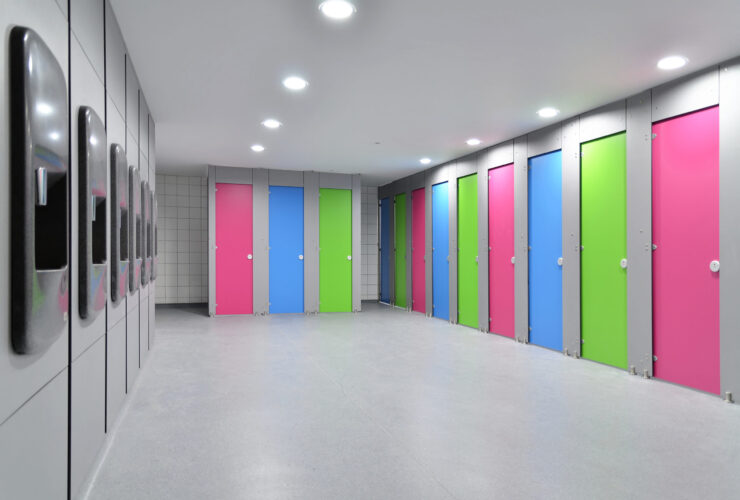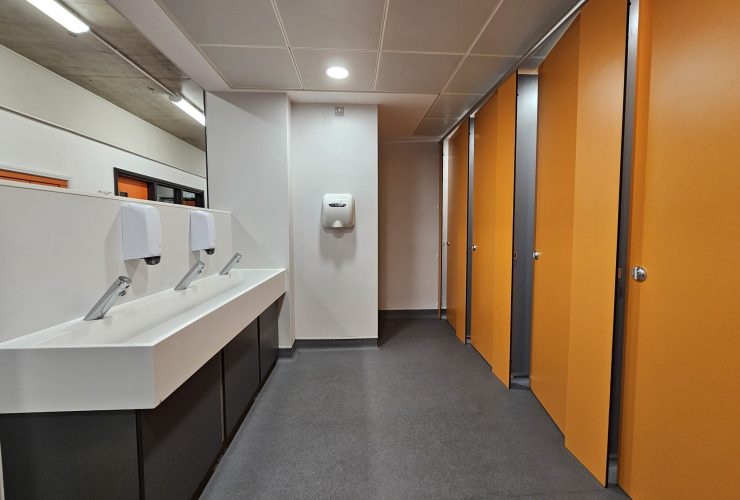Have you heard of a Changing Places (CP) toilet?
Changing Places started as a campaign to address the need for specialised toilet and changing facilities for people who are unable to use a standard or an accessible water closet (WC). It was particularly developed for those with multiple learning and physical disabilities that affect independent movement such as muscular dystrophy, multiple sclerosis, severe spinal injuries and motor neurone disease.
A CP toilet or facility refers to a special kind of accessible toilet equipped with the necessary fixtures and designed with more space so that disabled people and their carers who need to use the toilet can do so in a comfortable, safe and dignified manner.
It started in the UK in 2006 and has since been adapted in various public spaces and buildings. This campaign was launched by the Changing Places Consortium which includes PAMIS, Royal Mencap Society, Centre for Accessible Environments, Dumfries and Galloway Council, Nottingham City Council and the Scottish Government.
There are now over 1,250 Changing Places toilets in the UK, strategically located in major public spaces such as shopping centres, railway stations, sporting venues and recreational areas like zoos and aquatic facilities.
The Sutton Railway Station was the first station to install a CP toilet. They won Loo of the Year in England in 2011 and was highly commended in the Passenger Experience category of the Railway Industry Innovation Awards in 2010. Of UK’s airports, the George Best Belfast City Airport was a CP pioneer in 2010. It was soon followed by East Midlands, Birmingham, Newcastle and Gatwick.
CP toilets in retail areas are also crucial to ensuring accessibility. In Edinburgh’s IKEA outlet, the CP facility benefits both staff and customers. Facilities are also available in Trafford Centre in Manchester and in WestQuay and Westfield in East London, among others.
HOW DO YOU DIFFERENTIATE A CHANGING PLACES TOILET?
A CP toilet is specifically designed to provide “sanitary accommodation” for people with multiple or complex disabilities and their families or carers. It has a suitable changing bench which allows disabled people, with help from their carers, to change in a safe, hygienic and dignified manner.
Before CP toilets, many disabled people had to be laid on the floor to be changed, which compromises their health and safety, and adversely affects their sense of self-worth. This lack of adequate facilities also discouraged them from going out and curtailed their freedom of movement.
A properly equipped public toilet may not seem like much of a game-changer but for people whose most basic needs are not addressed in public spaces, a Changing Places facility makes a huge difference. It has a significant impact in improving their quality of life and empowers them to participate more fully in communal activities.
A CP toilet should be equipped with a height-adjustable adult-sized changing bench and a tracking hoist or a mobile hoist. The floors should be non-slip and there should be adequate space for the disabled person and up to two of his or her carers; a centrally positioned toilet with enough room on both sides; and a screen, curtain or partition for privacy.
A CP toilet must also have a wide tear off paper roll which can be used to cover the bench and a large waste bin. The wash basin should also be height-adjustable.
It is important to note that a CP toilet is different from an accessible WC.
CHANGING PLACES VS ACCESSIBLE WC
A standard accessible WC is designed to provide space for wheelchair access. It is meant for independent use by a disabled individual. There are grab rails or fixed-position hand rails on the side and rear of the pan, to help the person move to and from the wheelchair. Other features include lower mirrors and wash basins for easier access, Braille signage and toilet seat in contrasting colour.
An accessible WC can be used by someone using a standard wheelchair, but not a powered wheelchair or one fitted with additional leg and head support. It is also different from an ambulant toilet, which is designed for those with disabilities but do not require extra space or those who do not use a wheelchair.
CP facilities are designed for those who are unable to move or sit independently. They are configured to allow assistants or carers to also use the toilet without leaving a disabled person alone or unattended.
ACCESSIBLE ADULT CHANGE FACILITIES AND CHANGING PLACES
In Australia, Accessible Adult Change Facilities are now included in the building code. These are toilets and change facilities that cater to users who require additional space, time, assistance and specialised equipment. It was established in 2009 based on the Changing Places model, albeit there are certain differences, mostly related to structural and technical specifications.
For starters, a CP toilet must be accredited with Changing Places, through a trained assessor. An Accessible Adult Change Facility must be signed off by a building surveyor. It can be added to the National Public Toilet Map as an Adult Change Facility but not as Changing Places, unless it has been properly certified and registered. An accredited CP facility will be registered on the website, as well as on the map, so users and their families can plan their outings accordingly.
A CP toilet requires a wall-mounted privacy screen. It should be installed 900mm from the front of the pan. A shower is also recommended in sporting venues or aquatic centres. A CP facility requires a contrast between the seat and pan or floor, not both, as mandated in the Building Code of Australia (BCA). When it comes to hot water, BCA does not specify but CP facilities require hot water delivered through a mixing spout with a thermostatic valve.
CP toilets are not required facilities under BCA but Accessible Adult Change Facilities are, particularly in publicly shared spaces such as shopping centres, museums, art galleries, sporting venues and airports. Together with certified CP toilets, the goal is to enable more disabled people with access to facilities that are designed to adequately meet their needs.
***
References:
http://www.changing-places.org/LinkClick.aspx?fileticket=YEDKVYyX8TE%3D&tabid=38 https://grimbos.com.au/ambulant-and-accessible-toilets/ https://changingplaces.org.au/about/ http://www.changing-places.org/the_campaign/who_are_they_for_.aspx https://www.disabilityaccessconsultants.com.au/what-is-an-accessible-adult-change-facility/ https://www.disabilityaccessconsultants.com.au/accessible-adult-change-facilities-vs-changing-places/



